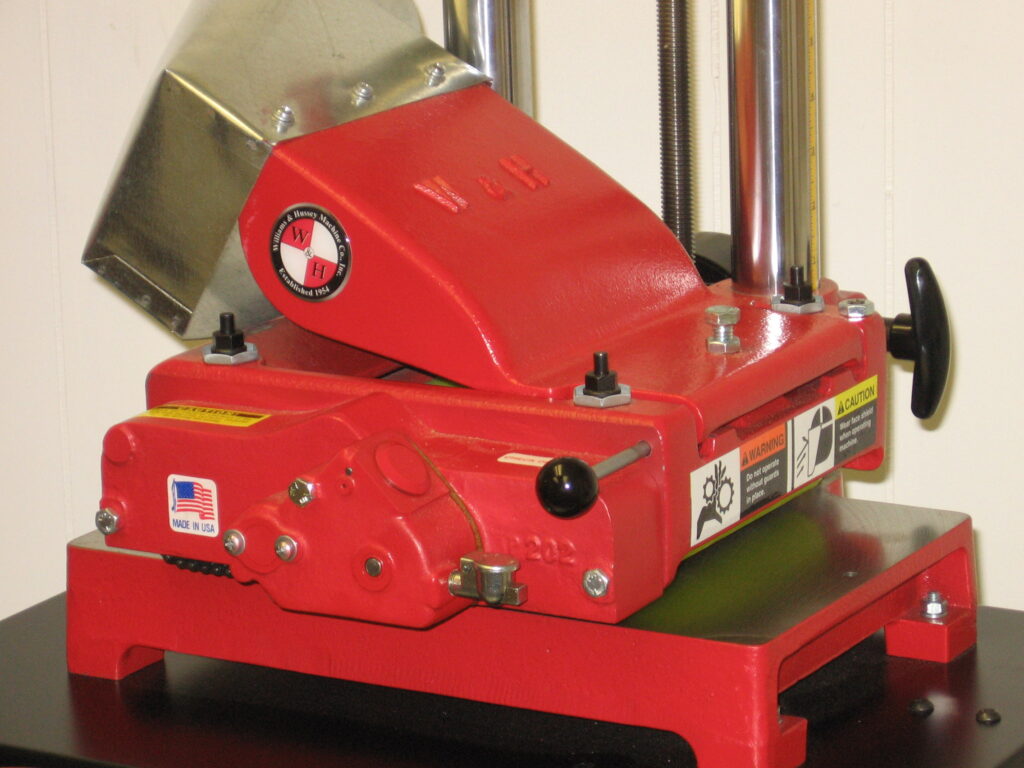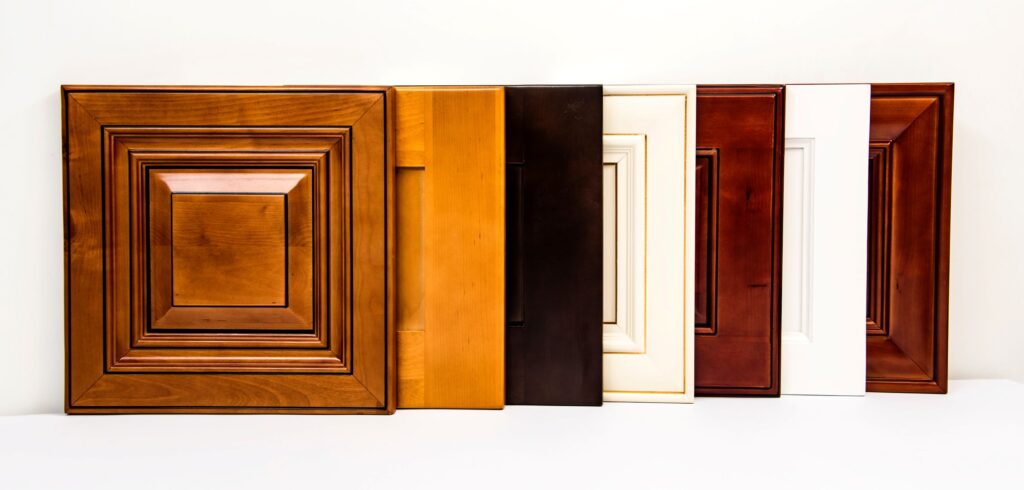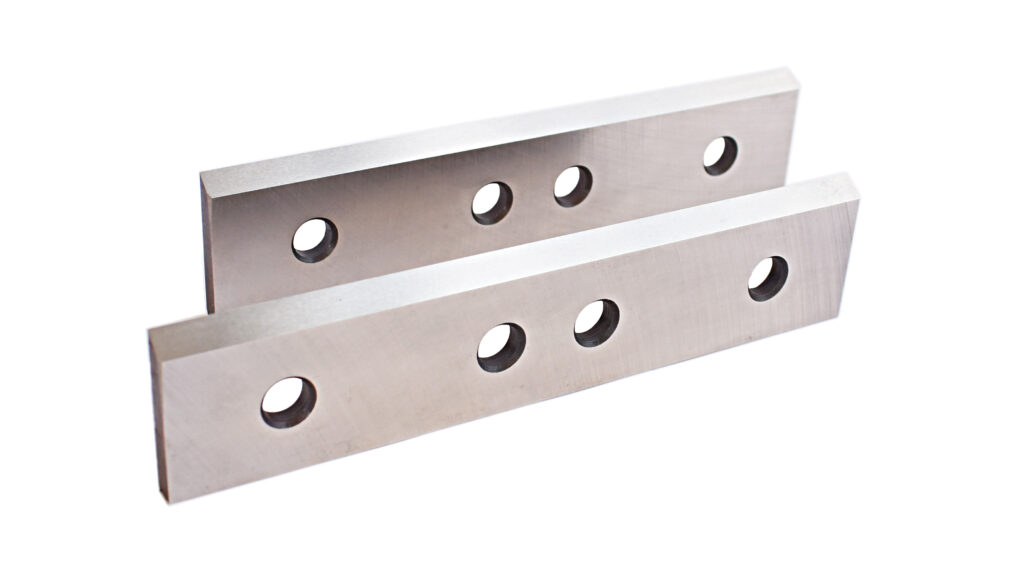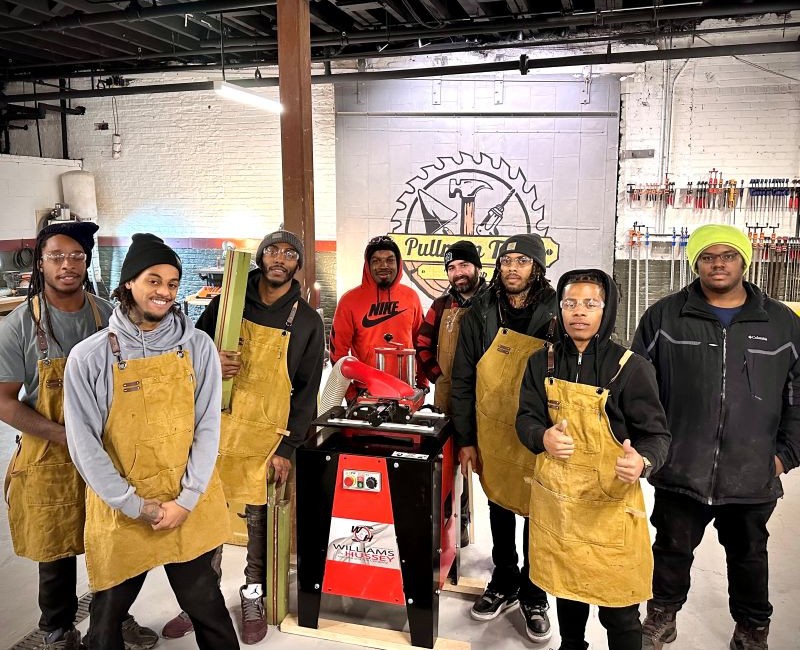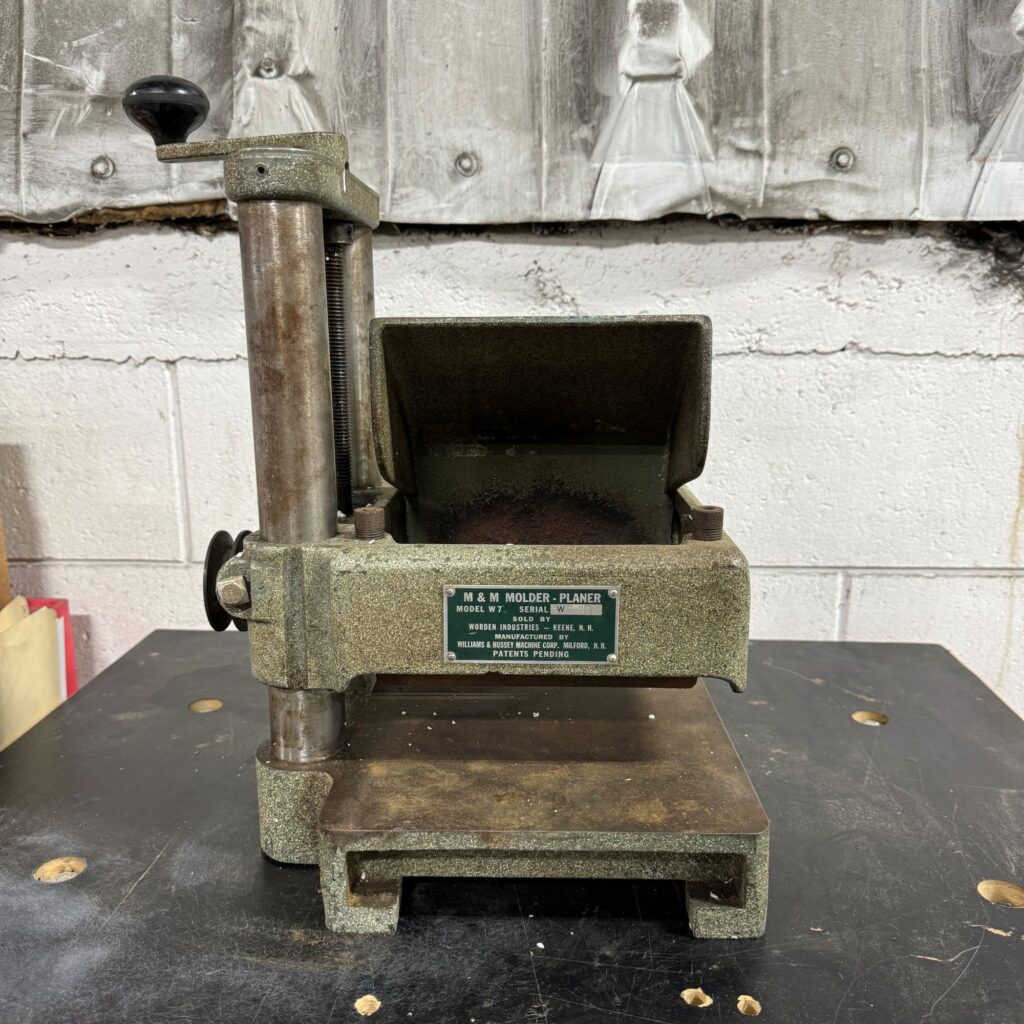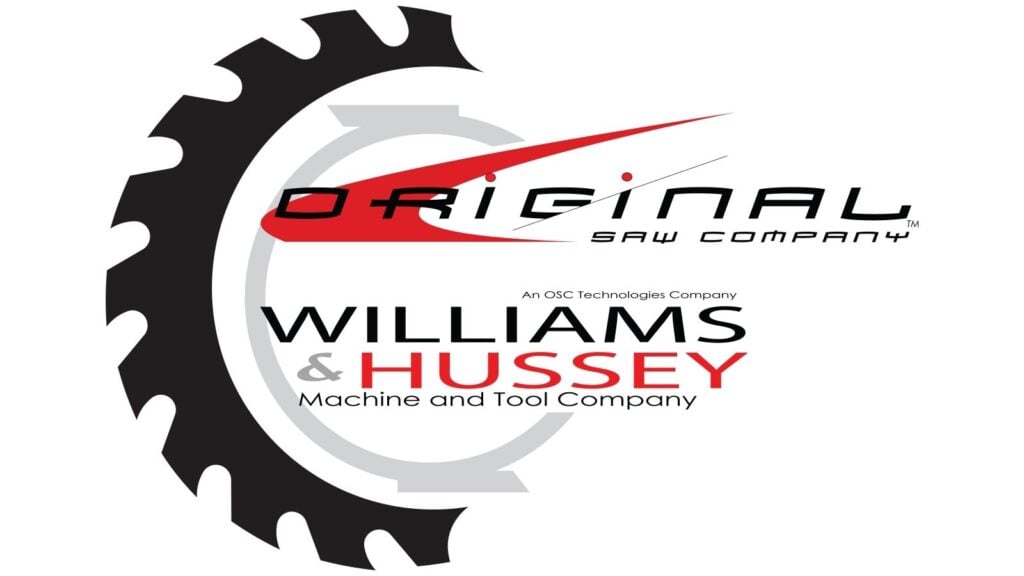How to Tell the Age of Your Williams & Hussey Molder
Williams & Hussey molders are known for their long life and dependable performance. It’s not unusual to see machines from the 1950s still running in shops today. Whether you’ve purchased a secondhand model or inherited a molder from a previous generation, you might be wondering: How old is it and what does that mean for upgrades, parts, and support?
The quickest way to determine your machine’s age is by locating the WH molder serial number, usually found on a metal plate attached to the base. Once you have the serial number, you can reference our chart to identify the model and production year.
Why the Age of Your Molder Matters
Knowing your molder’s production year helps you:
- Order the right replacement parts
- Determine compatibility with accessories and upgrades
- Understand its features and limitations
- Estimate resale value or insurance needs
Step 1: Locate Your WH Molder Serial Number
The easiest way to determine your molder’s age is by its serial number. Look for a metal plate mounted on the base of the machine. This will list the serial number and often the model.
Once you’ve found it, compare it to our WH Molder Serial Number Reference Chart below to find the year and model.
Example: A molder with serial number W1425 is a W7 model built in 1964.
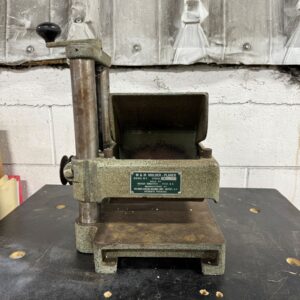
WH Molder Serial Number Reference Chart
| Year | W7 | W7PF | W7S | W&H Molder | The Original | Model 206 | Model 209 | Model 154 | Model 154CE |
|---|---|---|---|---|---|---|---|---|---|
| 1954 | W101 – W102 | none | none | ||||||
| 1955 | W103 – W700 | P101 – P356 | S101 – S251 | ||||||
| 1956 | W701-W1014 | P357-P400\nP1001-P1006 | S252-S352\nS1801-S1809 | ||||||
| 1957 | W1015-W1116 | P1007-P1039 | S1810-S1858 | ||||||
| 1958 | W1117-W1159 | P1040-P1063 | S1859-S1902 | ||||||
| 1959 | W1160-W1262 | P1064-P1080 | S1903-S1951 | ||||||
| 1960 | W1263-W1315 | P1081-P1109 | S1952-S1997 | ||||||
| 1961 | W1316-W1371 | P1110-P1151 | S1998-S2029 | ||||||
| 1962 | W1372-W1397 | P1152-P1163 | S2030-S2064 | ||||||
| 1963 | W1398-W1417 | P1164-P1173 | S2065-S2090 | ||||||
| 1964 | W1418-W1442 | P1174-P1181 | S2091-S2100 | ||||||
| 1965 | W1443-W1458 | P1182-P1188 | S2101-S2126 | ||||||
| 1966 | W1459-W1464 | P1189-P1191 | S2127-S2149 | ||||||
| 1967 | W1465-W1472 | S2150-S2169 | |||||||
| 1968 | W1473-W1481 | P1192-P1195 | S2170-S2187 | ||||||
| 1969 | W1482-W1492 | P1196-P1200 | S2188-S2197 | ||||||
| 1970 | W1493-W1503 | S2198-S2217 | |||||||
| 1971 | W1504-W1508 | P1201-P1201 | S2218-S2235 | ||||||
| 1972 | W1509-W1514 | P1202-P1202 | S2236-S2267 | ||||||
| 1973 | W1515-W1525 | P1211-P1215 | S2268-S2285 | ||||||
| 1974 | W1526-W1533 | P1216-P1216 | S2286-S2316 | ||||||
| 1975 | W1534-W1648 | P1217-P1282 | S2317-S2412 | ||||||
| 1976 | W1649-W1912 | P1283-P1422 | S2413-S2657 | ||||||
| 1977 | W1913-W2297 | P1423-P1692 | S2658-S3066 | ||||||
| 1978 | W2298-W2648 | P1693-P1886 | S3067-S3500 | ||||||
| 1979 | W2649-W2994 | P1887-P2126 | S3501-S4018 | ||||||
| 1980 | W2995-W3297 | P2127-P2334 | S4019-S4433 | ||||||
| 1981 | W3298-W3571 | P2335-P2496 | S4434-S4812 | ||||||
| 1982 | W3572-W3783 | P-2497-P2651 | S4813-S5115 | ||||||
| 1983 | W3784-W3963 | P2652-P2776 | S5116-S5381 | ||||||
| 1984 | W3964-W4079 | P2777-P2858 | S5382-S5646 | ||||||
| 1985 | W4080-W4333 | P2859-P2941 | S5647-S5966 | ||||||
| 1986 | W4334-W4374\nH10000-H10048 | P2942-P2956\nP10000-P10043 | S5967-S6054\nS10000-S10371 | ||||||
| 1987 | H10049-H10076 | P10044-P10063 | S10372-S10793 | ||||||
| 1988 | H10077-H10106 | P10064-P10089 | S10794-S11284 | ||||||
| 1989 | H10107-H10125 | P10090-P10106 | S11285-S11776 | ||||||
| 1990 | H10126 | P10107 | S11777-S12221 | ||||||
| 1991 | H10127-H10128 | P10108-P10109 | S12222-S12621 | ||||||
| 1992 | H10129-H10131 | P10110 | S12622-S13141 | ||||||
| 1993 | END | END | S13142-S13657 | ||||||
| 1994 | S13658-S14245 | ||||||||
| 1995 | S14246-S14831 | ||||||||
| 1996 | S14832-S15430 | ||||||||
| 1997 | S15431-S15983 | ||||||||
| 1998 | END | S15984-16212 | |||||||
| 1999 | 16213-16989 | ||||||||
| 2000 | 16900-17784 | ||||||||
| 2001 | 17785-18529 | ||||||||
| 2002 | 18530-19408 | ||||||||
| 2003 | 19409-20184 | ||||||||
| 2004 | 20185-20145 | ||||||||
| 2005 | 20146-21880 | ||||||||
| 2006 | 21881-22626 | 22221-22649V | |||||||
| 2007 | 22627-23035 | 22650V-00486 | |||||||
| 2008 | 00487-00745 | 23036-23161* | |||||||
| 2009 | 00746-00913 | 23162-23218 | |||||||
| 2010 | 00914-01028 | 50001-50011 | 23219-23258 | ||||||
| 2011 | 01029-01143 | 50012-50030 | 23259-23295 | ||||||
| 2012 | 01144-01256 | 50031-50047 | 23296-23305 | 70100-70126 | |||||
| 2013 | 01257-01353 | 50048-50058 | 70127-70153 | ||||||
| 2014 | 01354-01464 | 50059-50068 | 70154-70180 | ||||||
| 2015 | 01465-01574 | 50069-50078 | 70181-70198 | ||||||
| 2016 | 01575-01678** | 50079-50087*** | 70201-70226 | ||||||
| 2017 | 01679-01787 | 50089-50095*** | 70227-70247 | ||||||
| 2018 | 01788-01876**** | 50097-50111 | 70248-70268 | ||||||
| 2019 | 01877-02023 | 50112-50125 | 70269-70292 | ||||||
| 2020 | 02024-02031 | 50126 | 70293 | ||||||
| 2021 | 02035-02053\n20210492060001-20211292060089 | 50127-50131\n20210592090026-20211192090074 | 70294\n202107154C0033-20211291540086 | ||||||
| 2022 | 20220792060128-2023012060158 | 20220792090130-2022112090149 | 20220691540089-2022081540136 | ||||||
| 2023 | 2023012060159-2024012060205 | 2023042090172-2023092090194 | |||||||
| 2024 | 2023112060211-2024112060259 | 2023112090206-2024082090252 | |||||||
| 2025 | 2024082060251- | 2024122060263- |
2. Identify the Model
Legacy Models
W7 (1954–1992)
Original hand-fed model, known for simplicity and reliability. Painted green. Manual feed rollers.
W7PF (1955–1992)
Same as W7, but with powered feed rollers for faster production.
W7S (1955–1997)
Transition model with improved guides and feed system. More stable for longer stock.
Transitional & Modern Models
The W&H Molder (1998–2005)
Fixed feed rate with enclosed motor housing. A modernized version of legacy units.
The Original (2006–2007)
Short-run model, a stepping stone between legacy and 154 series.
Model 154 (2008–2012)
Fixed feed speed of 11 FPM. Clean design and enhanced safety features.
Model 154CE (2012–2021)
CE-compliant version of the 154. Optional power infeed/outfeed available.
Current Models
Model 206 (2006–Present)
Most versatile model with variable feed speeds and multi-pass capability. Available in single or 3-phase.
Model 206 Export (50Hz)
Same features as the 206, built for international power systems.
Model 209 (2010–Present)
Designed for home shops and contractors. Runs on standard 115V power. Compact but powerful.
Step 3: Check for Manuals or Paperwork
How to Visually Identify Your Molder
- Feed Type: Hand-fed vs. powered feed
- Motor Housing: Exposed (older) vs. enclosed (newer)
- Paint Color: Legacy units are often green or beige
- Controls: Newer models have variable speed dials or digital panels
- Badges: Look for engraved model tags or decals
What to Do Next
Once you know your model and year, you can:
If You Have an Older Molder (W7, W7PF, W7S):
- Add powered feed or variable speed
- Install modern accessories (chip extractor, guide system)
- Replace wear parts (fiber drives, feed rollers, belts)
If You Have a Newer Molder (154, 206, 209):
- Perform routine maintenance to extend machine life
- Add profile knives to expand capabilities
- Upgrade with compatible accessories
All upgrades include installation support and detailed instructions.
Let Us Help You Identify and Maintain Your Molder
If you’re still unsure about your molder’s age or model, we’re here to help. Just send us:
- Your WH Molder serial number (if available)
- Photos of your machine
- Any paperwork or purchase history
We’ll confirm the model and guide you to the right parts or upgrades.
Join a Legacy of Quality Craftsmanship
Since 1954, Williams & Hussey has been building reliable molders that stand the test of time. Whether you’re using a vintage W7 or a brand-new 206, we’re proud to support you and your work.
For more information on woodworking equipment standards and support, visit the Woodworking Machinery Industry Association.
